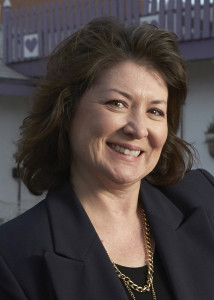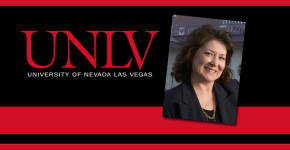
Portrayals of weddings and brides make for good television programming.
But as Erika Engstrom, professor of communications at the University of Nevada, Las Vegas, has found, these glitzy Hollywood renditions are unrealistic.
Erika Engstrom is a professor in the Department of Communication Studies at the University of Nevada, Las Vegas. She teaches courses in gender and nonverbal communication. Her research interests include mass media portrayals of gender and weddings. Dr. Engstrom has extensive experience in broadcasting on both television and radio. She earned her PhD from the University of Florida in 1991 and is the author of a number of communications/media books including The Bride Factory: Mass Media Portrayals of Women and Weddings.
Erika Engstrom – Wedding “Pictures”
Weddings serve as the typical ending to love stories. More realistically, they mark the beginning of a life together.
The variety and scope of mass media wedding “helpers” in the form of bridal magazines and reality television wedding shows provide ideas about how a wedding should look. Mainly, a wedding should be big and beautiful with all the correct trimmings: elaborate cake, flowers, dresses, music, reception.
 After studying wedding media for more than a decade, I’ve found that bridal-themed media that present us with a familiar version of bride and bridegroom reinforce traditional gender roles. Namely, the bride tends to take on most of the labor for what is supposed to be the most important day of her life. Reality television shows such as “Bridezillas” provide an extreme form of the superbride, a persona that allows the bridezilla to be rude, hysterical, and monstrous to her family, friends, even her husband-to-be!
After studying wedding media for more than a decade, I’ve found that bridal-themed media that present us with a familiar version of bride and bridegroom reinforce traditional gender roles. Namely, the bride tends to take on most of the labor for what is supposed to be the most important day of her life. Reality television shows such as “Bridezillas” provide an extreme form of the superbride, a persona that allows the bridezilla to be rude, hysterical, and monstrous to her family, friends, even her husband-to-be!
Her behavior is excused, of course, because she’s so stressed out about her special day. Bridal magazines consist of hundreds of pages of advertisements for the perfect wedding gown, perfect makeup, perfect wedding ring, perfect wedding cake, perfect wedding invitations, and perfect wedding favors.
When viewed as a composite, these messages tell women that their greatest accomplishment is to get married in a picture-perfect wedding. Given the rate of divorce, perhaps more time and effort could go into planning a marriage—one in which both partners share in working to make the relationship a success, rather than thinking “happily ever after” will automatically follow the dream wedding so meticulously presented in the media messages that equate money spent on the wedding with true love.
Read More: UNLV News Center: Before You Tie the Knot, Turn Off the Television
